Today’s healthcare system has become so standardized that if a person in a medical office were instantly and magically transported to a medical office in another city, the person would instantly recognize that they were still in a medical office. Our offices are now antiseptic, cold, and devoid of educational material and humanity and this office decor can adversely impact a physician’s ability to provide care to their patients.
When I built my first private practice office, I decided to design the office so it reflected my personality while simultaneously providing passive educational opportunities and entertainment for my patients.
The walls of my waiting room and exam rooms have been covered with an ever evolving display of newspaper articles, patient-appropriate medical journal articles, professional society patient educational publications, and personal writings, which I believe will help advance my patients’ health.

I have posted information about diabetes, diet, obesity, Covid, why it is important that patients tell their physicians when and why they are not taking their medicines, how to obtain their medicines at a lower cost, inexpensive medicines which might be able to be substituted for more expensive medicines, and other topics.
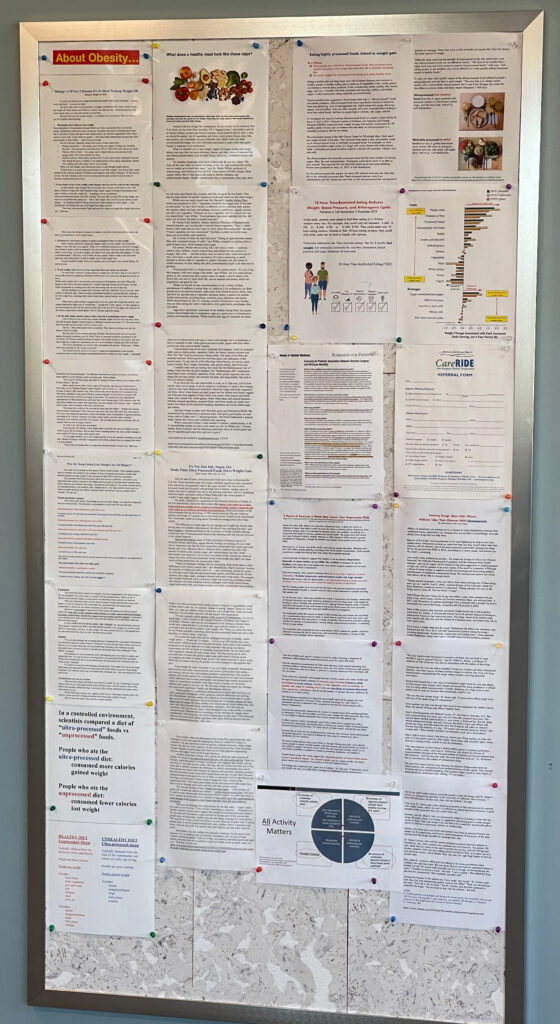
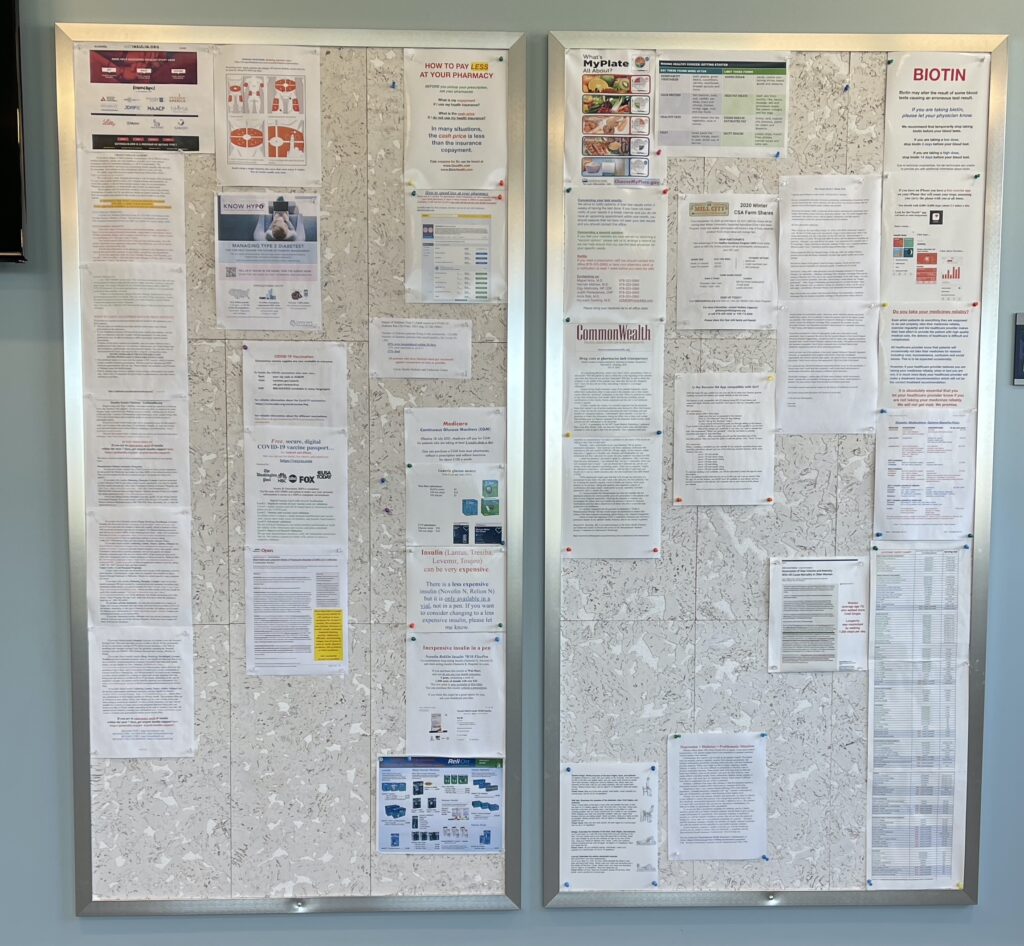
The educational materials on the walls of my office clearly resonate with patients. It is not uncommon for me to walk into an exam room and encounter a patient who is taking a photograph of one or more articles.
Along with the educational information displayed on the walls of my office, I also hang items which reflected my interests, hobbies and personality – all done in an attempt to humanize the physician-patient interaction.
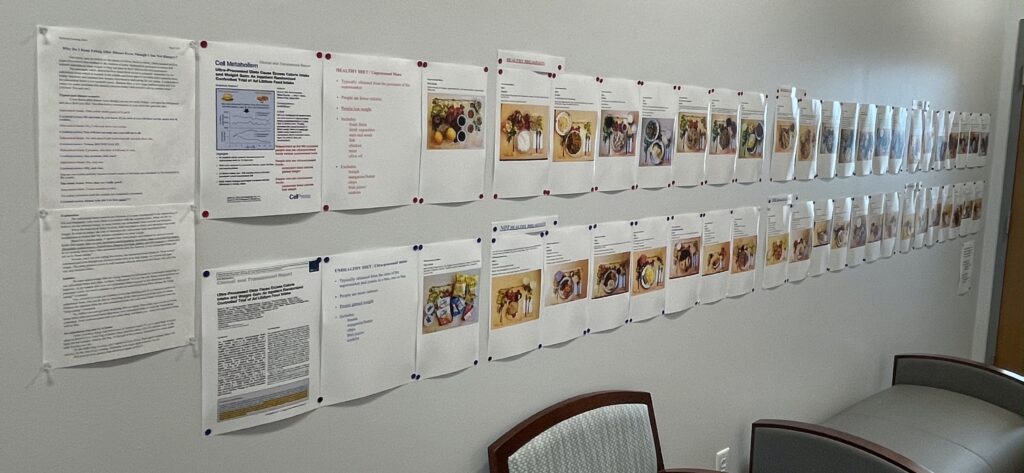
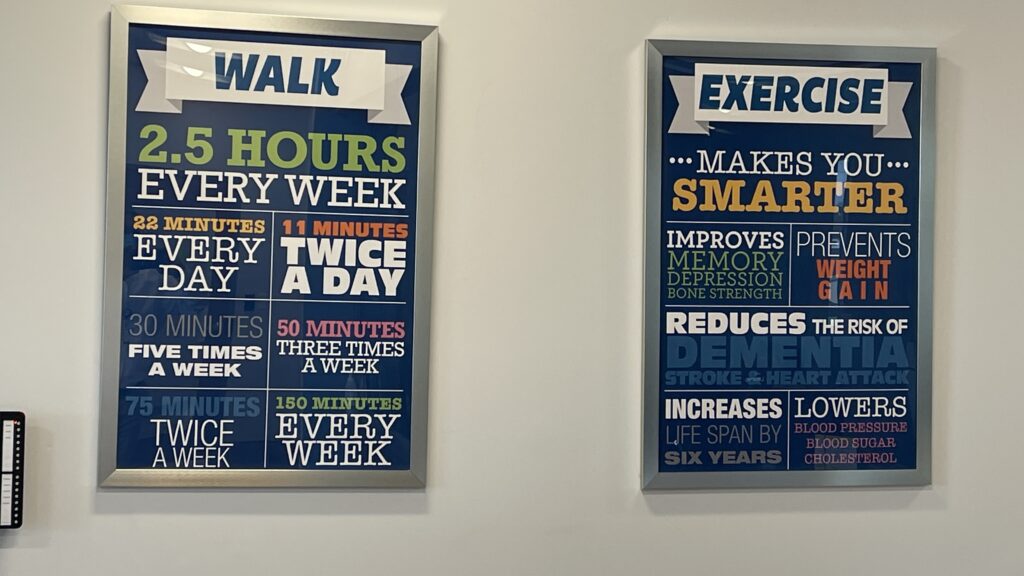
For a period of time some of the walls of my waiting room were covered with my wife’s oil paintings, ensconced in atypical wood frames that I designed and built. The presence of the pictures and frames resulted in many conversations between me and my patients that were outside the realm of traditional medical care and served to humanize me, as a person and thus strengthen my bond with my patients.

One of my exam rooms is covered with record albums which I had accumulated in the 1960s, 70s and 80s. Almost every patient between the ages of 45 and 75 years old that enters that room for the first time will make a comment about how they too had one or more of those record albums. When it is a patient whom I am meeting for the first time, this non-medical, “first contact” helps to establish a less clinical, more empathic relationship between patient and I and may facilitate the subsequent clinical conversation.
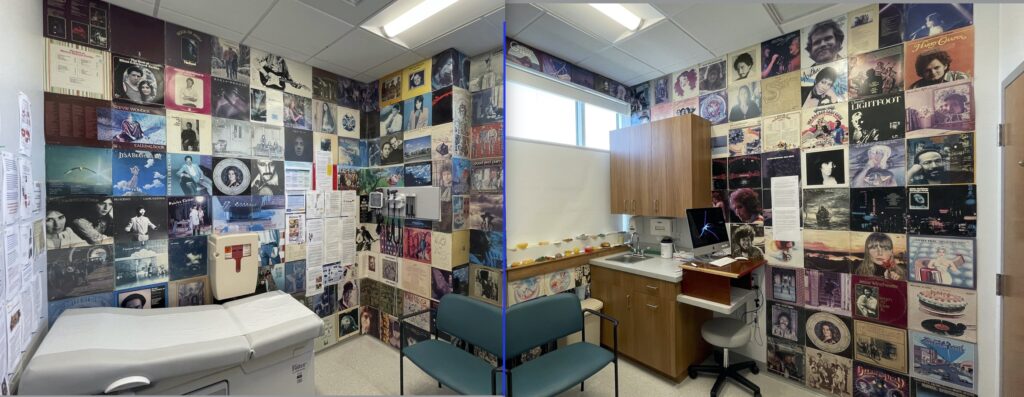
For a large fraction of my career in private practice, I also brought my pets into the office, my African gray parrot had a cage in the waiting room and my two dogs wandered between the exam rooms and my personal office. When the animals were not present, my established patients made it very clear to me or my staff that the much preferred when the animals were present.
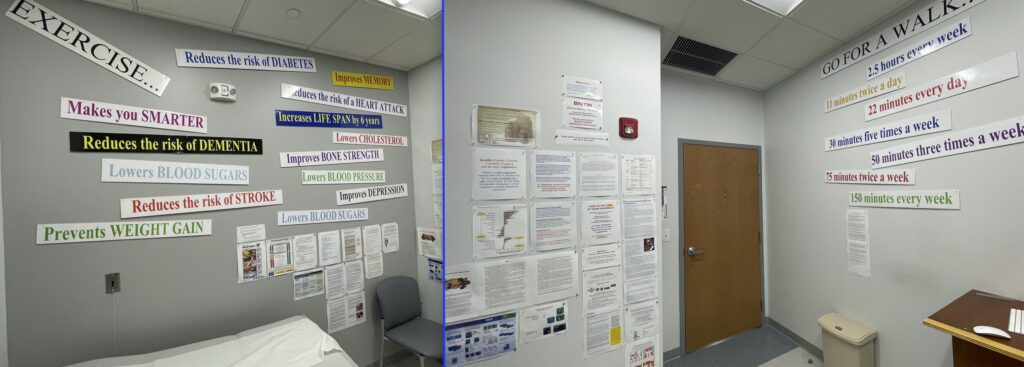
Occasionally a patient would bring their parents, friends or children to their office visit so they could meet the animals. The resultant conversations between me and my patients about the animals further humanized the physician-patient bond in a way that is not likely to occur in a sterile work environment. As I knew some patients would prefer that I not have the dogs in my office, I prominently displayed a sign in the waiting room stating that we would unquestionably and immediately lock-up the dogs on request – but that would only occur about once a month, and we subsequently would lock-up the dogs when that patient came to their next office visit.
Some physicians will argue that it is unprofessional to decorate the walls of their office or have pets in my office. One hospital administrator told me that “patients prefer the traditional sterile, hospital-like environment.” My interactions with my patients have demonstrated that the assumption that patients prefer the traditional, sterile medical office is woefully antiquated and not shared by most of the patient I have met.
I believe that today’s institutional medical office decor promotes an artificial distinction and creates an unnecessary barrier between the patient and the physician, thus resulting in the standardization and depersonalization of healthcare. This depersonalization may adversely impact a physician’s ability to obtain an accurate history and perversely impact their ability to take care of their patient.
Physicians need to take back control of the healthcare system from the healthcare institutions which have so warped the delivery of healthcare in the US. Decorating our offices with educational materials and items that reflect our personality is something that can be done easily, inexpensively, helps to promote healthcare education, improve physician-patient rapport and is appreciated by the vast majority of patients.
